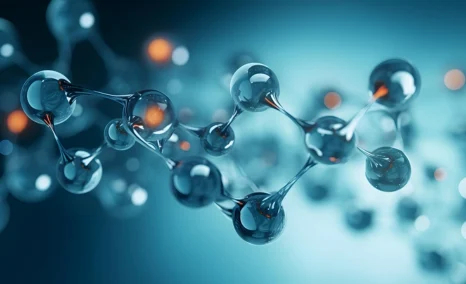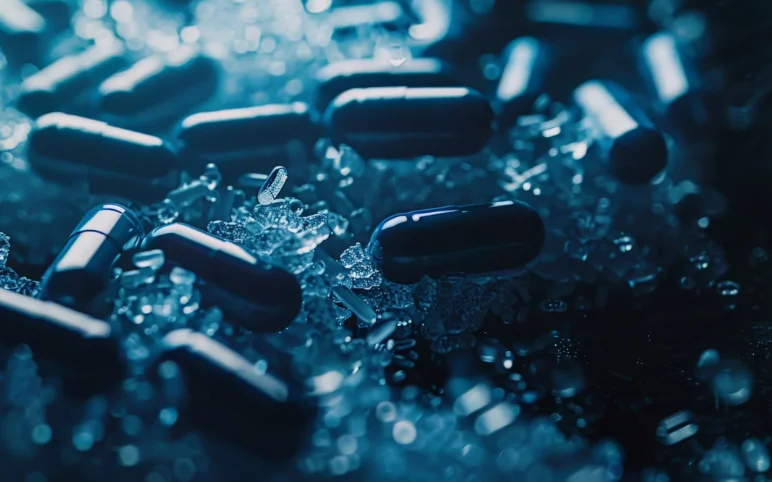
Dec 10, 2025
A New Era of Dermatology: In-Depth Analysis of Energy-Based Aesthetic Device Applications

Dec 09, 2025
Jul 13, 2020
Metabolic Acidosis Market offers immense opportunities to the pharma players to explore, which currently is dominated by alkali therapies and lacks any approved therapy. Launch of Pipeline therapies and rising prevalence shall accelerate the MA market growth in 7MM+3EM by 2030.
An acid-base disorder, Metabolic acidosis (MA) is a result of a disturbance in the homeostasis of plasma acidity or acidosis of metabolic, i.e., primary reduction of bicarbonate (HCO3−), typically with a compensatory decrease in carbon dioxide partial pressure (Pco2), and a resultant increase of hydrogen ion in blood.
The major etiologies of the disorder include an increase in the production of acid (maybe exogenous or endogenous such as lactic acid in cases of tissue hypoxemia, β-hydroxybutyrate in diabetic ketoacidosis), a decrease in excretion of acid, acid ingestion, and renal or gastrointestinal (GI) bicarbonate losses. Administration of acid precursors including sodium chloride (NaCl), ammonium chloride, bromine, valproic acid, acetic anions (through dialysis solution), sulfur and during the administration of total parenteral nutrition (TPN) can also lead to Metabolic acidosis.
Click Here To Get the Article in PDF
Metabolic acidosis prevalence is seen across all the age groups; however, MA cases are most common in middle-aged and older adults in comparison to young adults.
As per the DelveInsight analysis, the total Metabolic acidosis prevalent cases in 7MM+3EM (the US, EU5 (the UK, Italy, Germany, France, and Spain) and Japan + China, Brazil and Mexico) were 19,982,276 cases in 2017. Furthermore, MA prevalence is expected to rise in the forecast period 2020-30. China, among all the geographies mapped, accounted for the highest Metabolic acidosis prevalence, with Germany accounting for the maximum MA prevalent cases among the EU5 regions. Moreover, Metabolic acidosis epidemiological analysis demonstrated a higher predisposition of males accounting for 55% of all the MA cases in the 7MM+3EM.
As a cause of underlying pathology, Metabolic acidosis worsens with the progression in the disease. Often caused by a decrease in kidney functions to get rid of excess acids, a process known as ammonia genesis, Metabolic acidosis is most prevalent in patients with Chronic Kidney Injury and Distal renal tubular acidosis. However, approximately 70-80% of the CKD patients suffering from metabolic acidosis remain underdiagnosed. Therefore, proper diagnosis of metabolic acidosis is imperative to minimize the mortality rate. Anion gap along with other differential diagnosis methods such as toxicological screening and imaging of the kidneys, along with testing of electrolytes, a full blood count, and urinalysis can help distinguish between different types of metabolic acidosis.
Thus, the prognosis of the disease depends on the etiology and correction of the causing disease in order to reduce morbidity and mortality. Several options are currently available in Metabolic acidosis market; however, none is FDA-approved. The current Metabolic acidosis market is dependent on alkali therapies, sodium bicarbonate tablets, sodium citrate solutions, and potassium citrate tablets, among others.
Most Metabolic acidosis patients affected with high-grade CKD are given nutritional alkali therapy with fruits and vegetables with high sodium bicarbonate levels as they help in restoring the kidney function by normalizing tCO2 levels and stabilizing eGFR. In some cases, dietary supplements that add potassium, fiber, and other nutrients are given to address metabolic acidosis in CKD. However, large-scale studies have yet to be conducted to demonstrate the clinical and statistical efficacy of alkali therapies in managing metabolic acidosis. Moreover, there is a scope for better and enhanced R&D activities that shall address the patient pool on broader terms.
The Metabolic acidosis market size was estimated to be USD 26.89 Million in 2017 in 7MM+3EM, which was significantly dominated by alkali therapies. However, the anticipated launch of Metabolic acidosis pipeline therapies in the forecast period 2020-30 will snatch the market dominance and decrease its Metabolic acidosis market share occupied by alkali therapies. Currently, Tricida and Advicenne are the two pharmaceutical companies actively engaged in the development of novel therapies and advancing Metabolic acidosis treatment market. The expected launch of MA pipeline therapies Veverimer (Tricida), and ADV7103 (Advicenne), shall significantly influence the Metabolic acidosis market size growth by 2030. Last year in November, the Tricida’s Veverimer – a non-absorbed, orally-administered polymer – got the FDA’s acceptance for New Drug Application (NDA) under the Accelerated Approval Program that shall further accelerate the MA market growth. Better awareness, increasing prevalence, better epidemiological analysis and demand for better specific treatment options are other factors that shall drive the Metabolic acidosis market forward for the forecast period 2020-30.
Even with the anticipated growth; however, Metabolic acidosis market analysis demonstrated only a few of the companies are actively working in the market towards finding a clinically effective and safe treatment for the disease. Despite the effectiveness of the therapies as shown in ongoing clinical trials in maintaining acid-base balance aim for patient-specific therapies in the pipeline that can target the root cause of the disease. Therefore, Metabolic acidosis market offers immense opportunities to the pharma players to explore and invest their time in the domain to dominate the Metabolic acidosis market, which currently provides off-label therapies.
Article in PDF

Dec 10, 2025

Dec 09, 2025
Dec 08, 2025
Metabolic Acidosis Market offers immense opportunities to the pharma players to explore, which currently is dominated by alkali therapies and lacks any approved therapy. Launch of Pipeline therapies and rising prevalence shall accelerate the MA market growth in 7MM+3EM by 2030.
An acid-base disorder, Metabolic acidosis (MA) is a result of a disturbance in the homeostasis of plasma acidity or acidosis of metabolic, i.e., primary reduction of bicarbonate (HCO3−), typically with a compensatory decrease in carbon dioxide partial pressure (Pco2), and a resultant increase of hydrogen ion in blood.
The major etiologies of the disorder include an increase in the production of acid (maybe exogenous or endogenous such as lactic acid in cases of tissue hypoxemia, β-hydroxybutyrate in diabetic ketoacidosis), a decrease in excretion of acid, acid ingestion, and renal or gastrointestinal (GI) bicarbonate losses. Administration of acid precursors including sodium chloride (NaCl), ammonium chloride, bromine, valproic acid, acetic anions (through dialysis solution), sulfur and during the administration of total parenteral nutrition (TPN) can also lead to Metabolic acidosis.
Metabolic acidosis prevalence is seen across all the age groups; however, MA cases are most common in middle-aged and older adults in comparison to young adults.
As per the DelveInsight analysis, the total Metabolic acidosis prevalent cases in 7MM+3EM (the US, EU5 (the UK, Italy, Germany, France, and Spain) and Japan + China, Brazil and Mexico) were 19,982,276 cases in 2017. Furthermore, MA prevalence is expected to rise in the forecast period 2020-30. China, among all the geographies mapped, accounted for the highest Metabolic acidosis prevalence, with Germany accounting for the maximum MA prevalent cases among the EU5 regions. Moreover, Metabolic acidosis epidemiological analysis demonstrated a higher predisposition of males accounting for 55% of all the MA cases in the 7MM+3EM.
As a cause of underlying pathology, Metabolic acidosis worsens with the progression in the disease. Often caused by a decrease in kidney functions to get rid of excess acids, a process known as ammonia genesis, Metabolic acidosis is most prevalent in patients with Chronic Kidney Injury and Distal renal tubular acidosis. However, approximately 70-80% of the CKD patients suffering from metabolic acidosis remain underdiagnosed. Therefore, proper diagnosis of metabolic acidosis is imperative to minimize the mortality rate. Anion gap along with other differential diagnosis methods such as toxicological screening and imaging of the kidneys, along with testing of electrolytes, a full blood count, and urinalysis can help distinguish between different types of metabolic acidosis.
Thus, the prognosis of the disease depends on the etiology and correction of the causing disease in order to reduce morbidity and mortality. Several options are currently available in Metabolic acidosis market; however, none is FDA-approved. The current Metabolic acidosis market is dependent on alkali therapies, sodium bicarbonate tablets, sodium citrate solutions, and potassium citrate tablets, among others.
Most Metabolic acidosis patients affected with high-grade CKD are given nutritional alkali therapy with fruits and vegetables with high sodium bicarbonate levels as they help in restoring the kidney function by normalizing tCO2 levels and stabilizing eGFR. In some cases, dietary supplements that add potassium, fiber, and other nutrients are given to address metabolic acidosis in CKD. However, large-scale studies have yet to be conducted to demonstrate the clinical and statistical efficacy of alkali therapies in managing metabolic acidosis. Moreover, there is a scope for better and enhanced R&D activities that shall address the patient pool on broader terms.
The Metabolic acidosis market size was estimated to be USD 26.89 Million in 2017 in 7MM+3EM, which was significantly dominated by alkali therapies. However, the anticipated launch of Metabolic acidosis pipeline therapies in the forecast period 2020-30 will snatch the market dominance and decrease its Metabolic acidosis market share occupied by alkali therapies. Currently, Tricida and Advicenne are the two pharmaceutical companies actively engaged in the development of novel therapies and advancing Metabolic acidosis treatment market. The expected launch of MA pipeline therapies Veverimer (Tricida), and ADV7103 (Advicenne), shall significantly influence the Metabolic acidosis market size growth by 2030. Last year in November, the Tricida’s Veverimer – a non-absorbed, orally-administered polymer – got the FDA’s acceptance for New Drug Application (NDA) under the Accelerated Approval Program that shall further accelerate the MA market growth. Better awareness, increasing prevalence, better epidemiological analysis and demand for better specific treatment options are other factors that shall drive the Metabolic acidosis market forward for the forecast period 2020-30.
Even with the anticipated growth; however, Metabolic acidosis market analysis demonstrated only a few of the companies are actively working in the market towards finding a clinically effective and safe treatment for the disease. Despite the effectiveness of the therapies as shown in ongoing clinical trials in maintaining acid-base balance aim for patient-specific therapies in the pipeline that can target the root cause of the disease. Therefore, Metabolic acidosis market offers immense opportunities to the pharma players to explore and invest their time in the domain to dominate the Metabolic acidosis market, which currently provides off-label therapies.
